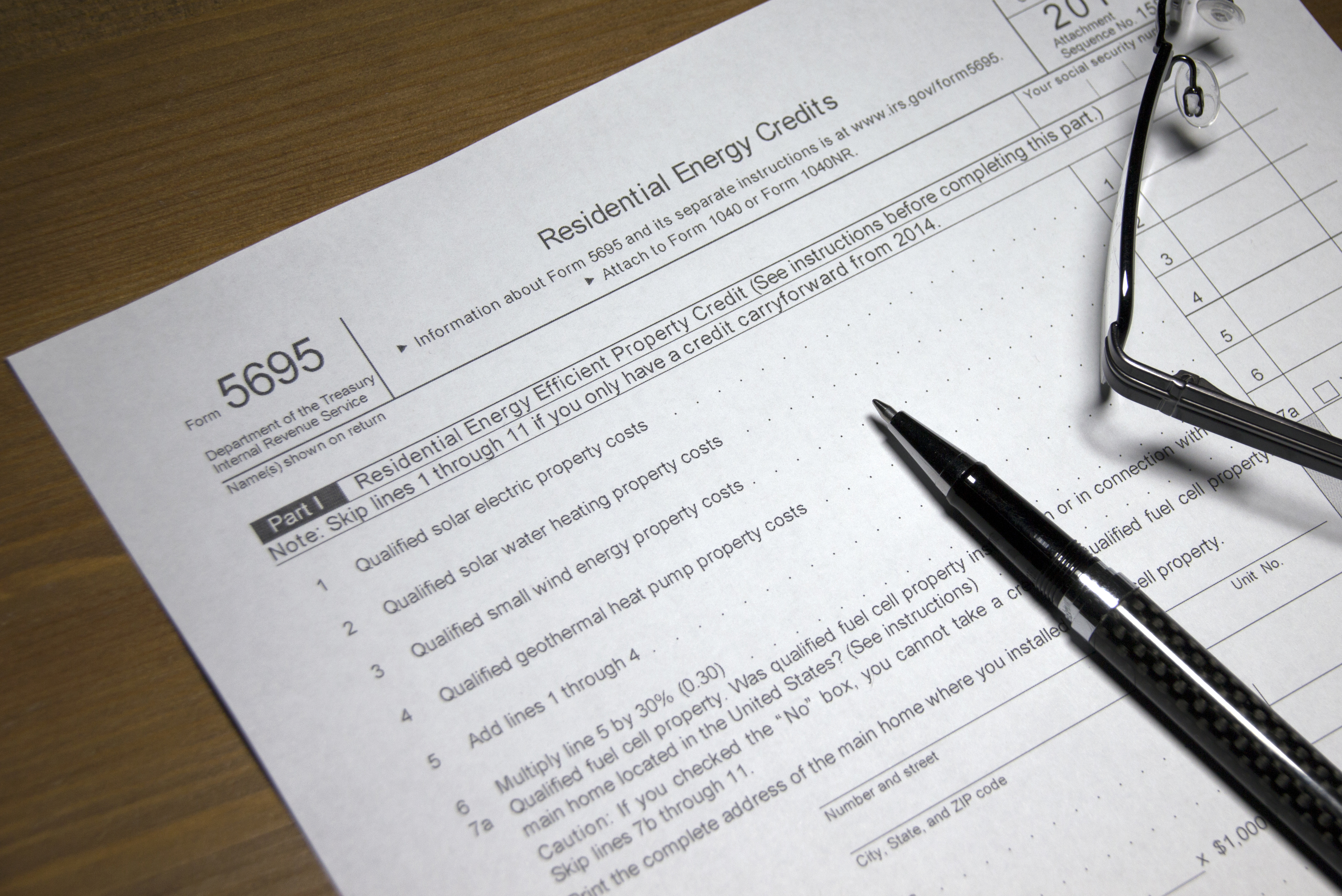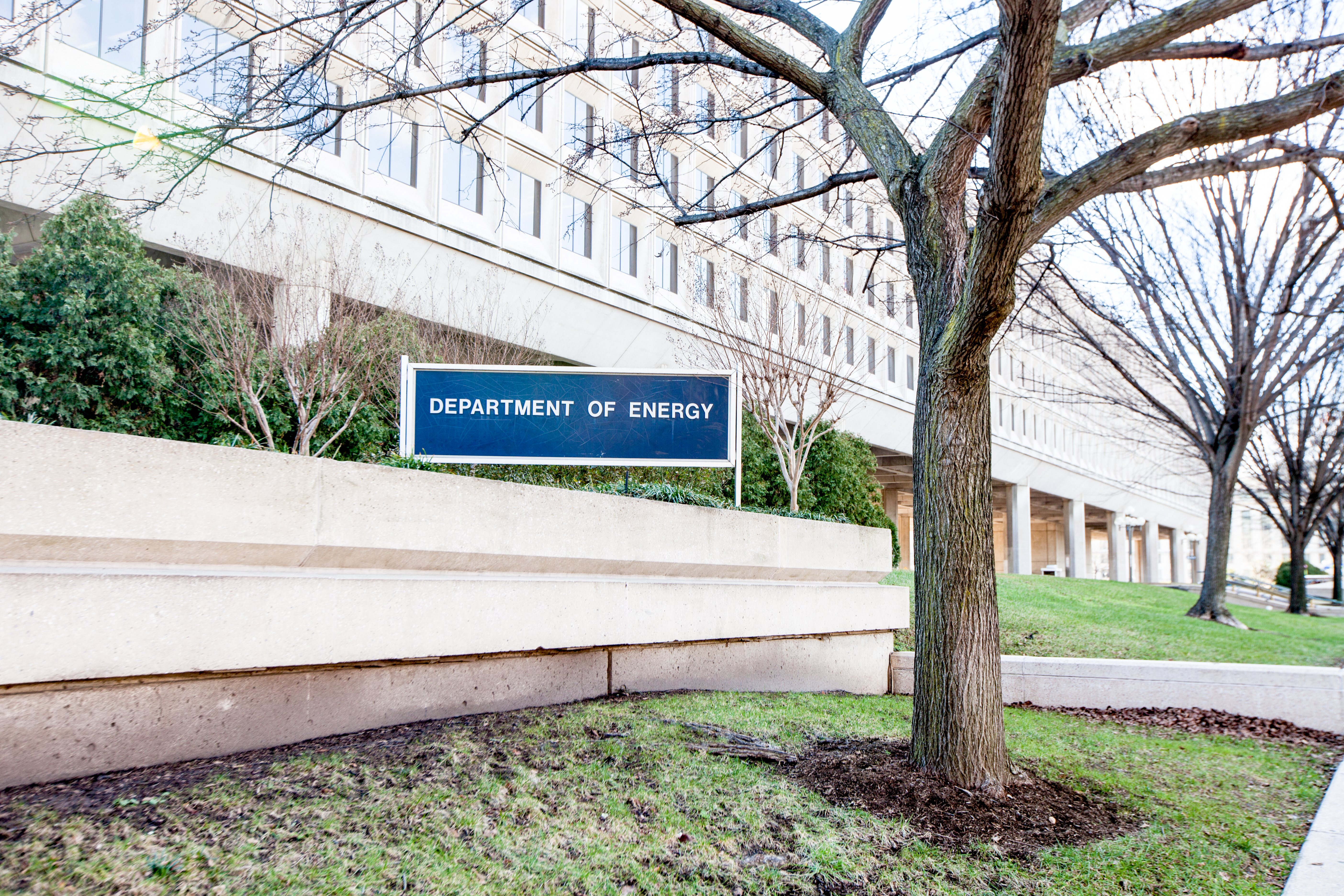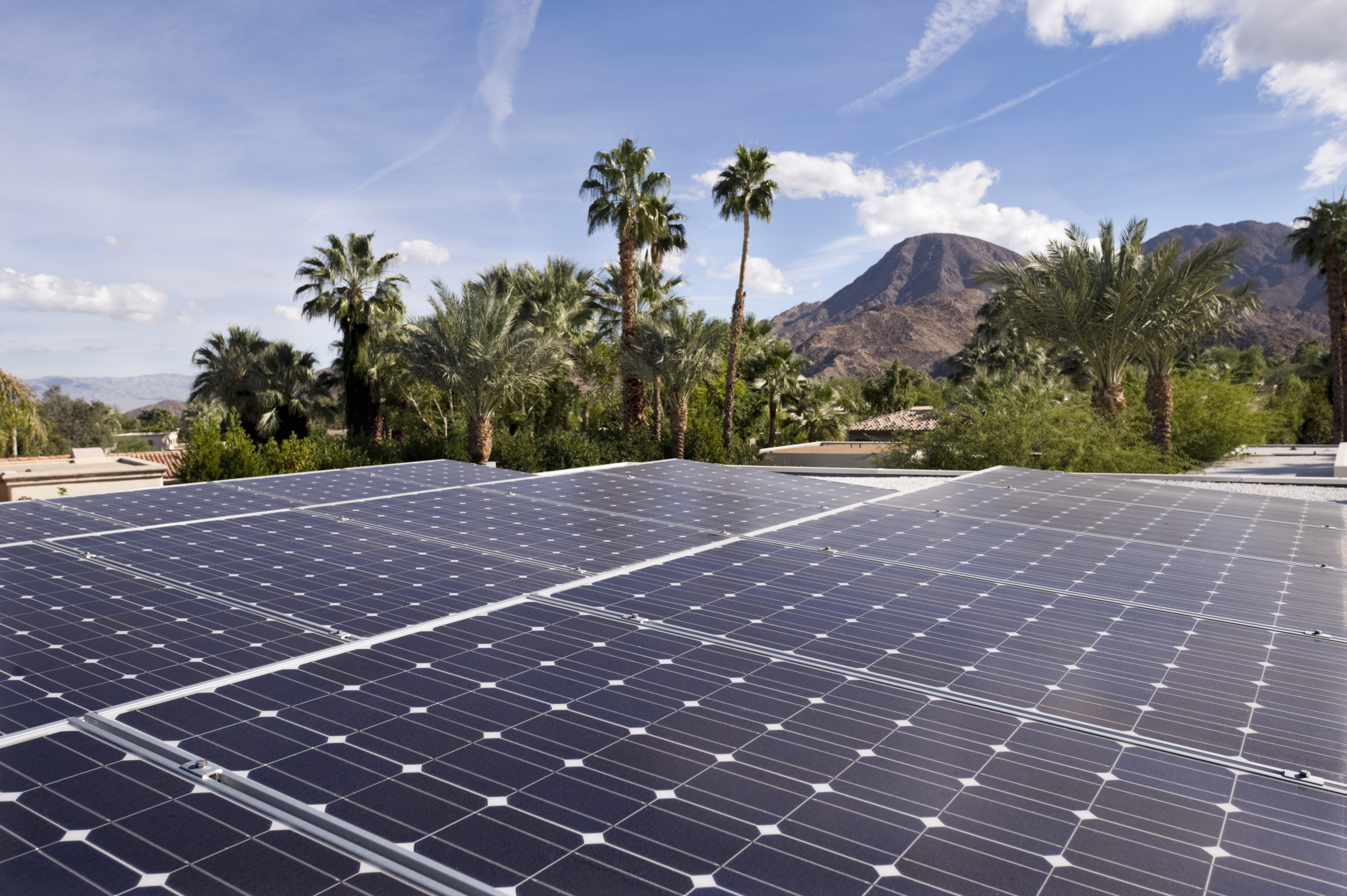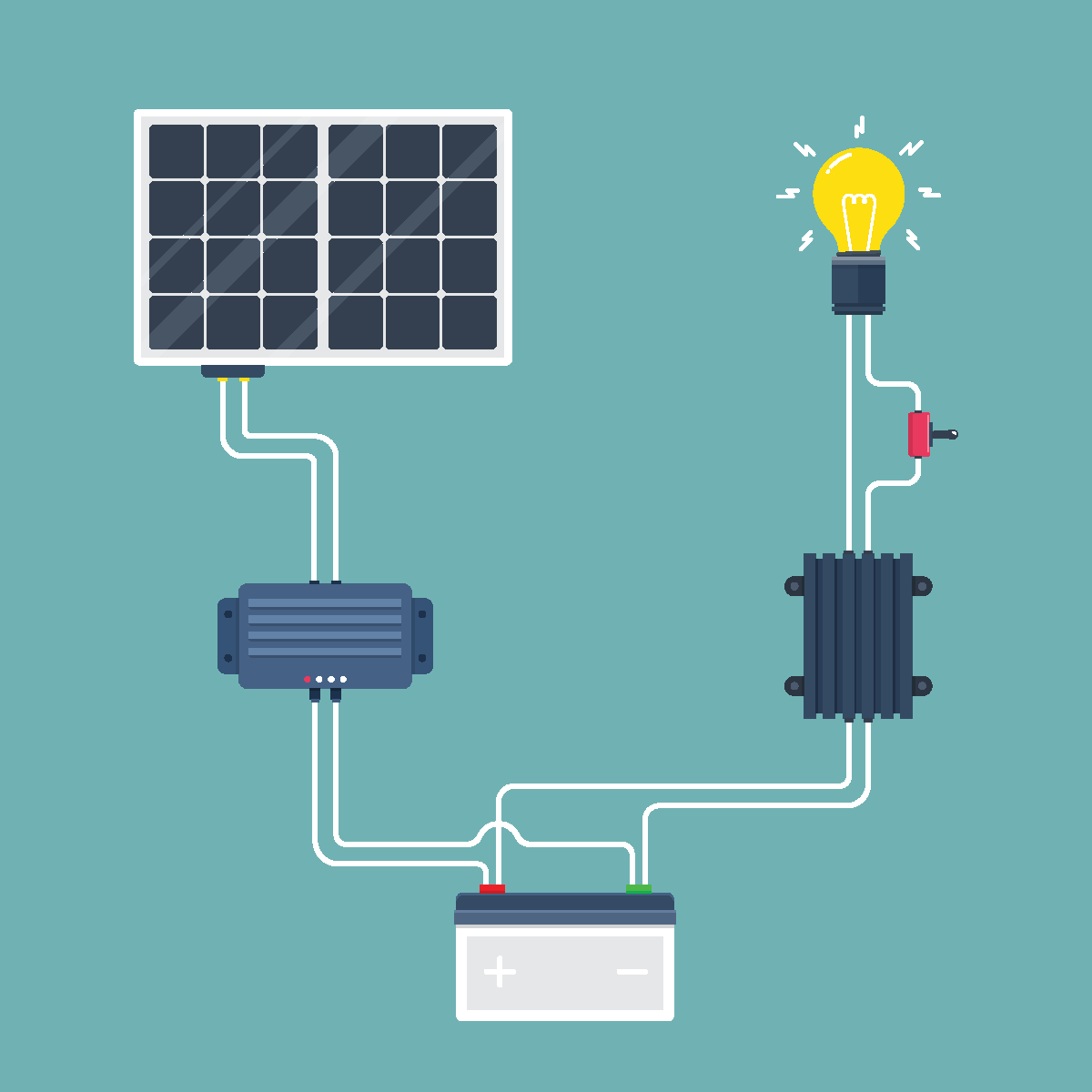The solar energy investment tax credit (ITC) has been a major driver of rooftop solar across the U.S. since 2006. This federal incentive reduces your system’s cost by 30%, but 2019 is the last year at this level. This article by Your Money Geek explains the ins and outs of solar incentives and the worldwide renewable energy push.
All About the Solar Energy Investment Tax Credit
The solar energy investment tax credit (ITC) has been a major driver of renewable energy uptake across the U.S. since its origination in 2006. Extended two times and reshaped in 2015, the 30% federal ITC is one of the most important federal policy mechanisms to support the deployment of solar energy in the United States. Other incentives have helped along the way as well.
In 2015, many stakeholders successfully advocated for an extension and eventual phase-out of the ITC. Under tax reform in 2018 (the Tax Cuts and Jobs Act), the commercial and residential renewable energy ITCs were maintained and the long-term extension through 2021 provided market certainty for companies.
This will allow them to develop long-term investment strategies to ease off the dependency of the credit and rely on margins earned through broader adoption and continued installation growth.
This article pulls on my experience and knowledge acquired from 5 years working in a utility's regulatory department. It explores the solar energy investment tax credit and its effects on the solar industry, other incentives used to enable solar energy buildout, the cost of solar, and a brief overview of how solar technologies work.
You may come to find solar to be the power generation technology of the future.
What is a Tax Credit?
First, let's look at tax credits. These items offset a taxpayer's tax liability in a given year and are superior to tax deductions.This is due to their nature of offsetting tax liability dollar-for-dollar as opposed to a reduction in taxable income.
What is the Solar Energy Investment Tax Credit?
The solar energy investment tax credit applies to new solar projects constructed in the U.S. and comes as a 30% tax credit on the qualified cost of the project's generating equipment.
The credit stands at 30% today but will step down each year after 2019 and eventually sunset after 2021 for homeowners. A 10% credit remains in place for businesses indefinitely.
Over the last several decades, the U.S. government has offered various incentives for solar power. As of this writing, the largest financial incentive in place for projects is the 30% federal ITC. In brief, the ITC came about and morphed as a result of:
- The Energy Policy Act of 2005, which increased the ITC from 10% of the qualifying project's cost to 30% for new projects through 2007
- In 2008, the Emergency Economic Stabilization Act extended the 30% ITC through 12/31/2016
- An agreement as part of the omnibus spending bill in 2015 extended the ITC through 2021 at which time commercial projects will again receive only 10% and homeowners will no longer receive the ITC
The ITC can be taken as a credit against taxes owed. For solar developers, they must then reduce the depreciable basis of the eligible system costs by one-half of the ITC. In effect, this makes the depreciable basis 85% (reduced by half of 30%) of the investment cost at the current ITC rate.
The ITC requires the developer to have taxable income or to find a tax equity investor willing to purchase the tax credit, typically in exchange for an equity stake in the project. For homeowners who buy a solar system, they can claim the credit. However, if you lease panels from a third-party developer, the credit belongs to the developer and not the system lessee.
In other words, if you buy a system, you can claim the 30% ITC. If you lease a system, the developer takes the 30% ITC but should reflect its benefit in the lease agreement you sign.
There is no guarantee this tax credit flows through to your lease but should be compared to other leasing companies' offers to identify if you have received a competitive quote for your leased system.
Is the 30% Investment Tax Credit Refundable?
Unlike some other tax credits, like the earned income tax credit, the 30% solar ITC is not refundable. As a taxpayer, you must have a tax liability to offset to claim the ITC. The unused portion of the credit can carry over to future tax years for up to five years.
For non-profits or government agencies which have no tax liability, they currently cannot take advantage of the ITC directly. However, some have partnered with third-parties who have a tax liability and can take advantage of the ITC.
Solar Investment Tax Credit Recapture Rules
When considering a solar project and how the ITC can reduce costs, be mindful of recapture rules. The ITC vests 20 percent per year, or fully after 5 years.
The vesting schedule begins when placing the project in service and steps down on each anniversary thereafter. If the taxpayer chooses to dispose of the Section 1231 solar property prior to five years, the IRS recaptures the unvested portion of the ITC.
This means the taxpayer will have an increased tax bill for the year in which the recapture occurs. The tax bill increases to an amount equal to the unvested ITC and no interest or penalties will apply, assuming the taxpayer files the return on time and correctly.
How Do I Claim the Solar Energy Tax Credit?
To claim the 30% ITC, you will need to complete IRS Form 5965 to verify your qualification and claim on the renewable energy investment tax credit. From there, this information will show on your Form 1040 which includes information from other documents like your Form W-2 and 1099s.
If your solar system is sold as part of an asset disposition as a business, it will need to be listed on your Form 8594 and will qualify for capital treatment.
How to Calculate the ITC
When calculating the total tax credit received under the ITC, the methodology differs for homeowners and businesses.
Homeowners calculate the 30% credit on the net installed cost of the solar system. In other words, after the homeowner has deducted the value or any awarded state or utility rebates.
For example, let's say a homeowner purchased a 6-kilowatt (KW) system and paid $3 per watt (W), or $3,000 per kilowatt (1 kW = 1,000 W). The total system cost comes to $18,000 ($3,000/kW * 6 kW) and the state and utility combine to offer $3,000 in rebates, bringing the total upfront cost to $15,000.
To calculate the homeowner's ITC:
30% * $15,000 = $4,500 ITC to offset tax liability. This brings the total effective cost of the homeowner's solar system to $10,500 ($18,000 – $3,000 – $4,500), or $1.75/watt.
For businesses, their ITC triggers off the gross installed cost of the solar system. Or, before deducting any state or utility rebates. Using the same example as above:
30% * $18,000 = $5,400 as a credit to use towards tax liability.
This sounds like businesses receive a higher ITC. However, when the business receives the same $3,000 state and utility incentives, the IRS considers this $3,000 as earned income and becomes taxable.
For homeowners, the $3,000 counts as a "reduction in value" like a sale discount and does not have a tax consequence. Homeowners could use this tax credit to offset their tax liability and learn how to pay zero tax on their passive income as well.
What are Other Incentives to Make Solar Energy Attractive?
Prior to 2000, most companies, organizations, or governments installed solar panels for research and development (R&D) or demonstration projects. These projects were small in scale due to very high costs associated with the technology at the time.
However, in the early 2000s, supportive policies came into play in Europe and the U.S. which began to bring costs down. In Europe, particular countries (i.e., Germany, Italy, and Spain) opted to drive the adoption of renewable energy sources with feed-in tariffs (FiTs).
These payment mechanisms operate like long-term fixed price power purchase agreements (PPAs) and last 10 – 25 years with a price well above the market. These agreements drove significant renewable energy buildout.
Renewable Portfolio Standards
In the U.S., many states have implemented renewable portfolio standards (RPS) policies to increase the amount of renewable capacity on the power grid. An RPS is a state-level policy which requires utilities (or in some cases, just investor-owned utilities or IOUs) to procure certain amounts of energy from renewable sources.
Some RPS requirements contain provisions for specific renewable energy type carve-outs (e.g., wind, solar, biomass).
Compliance timelines vary for RPS requirements, and as a result, did not necessarily trigger the same pace or level of solar investments as seen by Europe's generous subsidies.
Germany's Energiewende, or "Energy Transition"
The predominant European adopter of renewable energy was Germany. The country had installed 1 gigawatt (GW) of solar PV by 2005 and more than 45 GW operates as of year-end 2018. This effort fell under the country's Energiewende movement, translated as "energy transition".
The policy champions a change from high-carbon intensity generation sources to a low-carbon, environmentally sound, reliable and affordable energy supply. The effort accelerated following the Fukushima Daiichi nuclear incident in Japan.
As a result of the terrible tsunami which flooded the nuclear reactor and caused radiation leakage, Germany decided to remove all nuclear generation from the country by 2022.
In effect, this doubled transition emphasis triggered the unintended consequence of increasing carbon emissions. Prematurely retiring 9 nuclear power plants, important for baseload power needs, made the next best solution coal power.
The country's only built-in baseload capacity alternative operated on coal, one of the dirtiest fuel sources. Replacing nuclear power with coal power puts a zero-carbon emitting resource out of commission and substitutes it with the dirtiest form of generation. Hardly the desired effect Germany sought at the outset of the Energiewende program.
The overall goal of Energiewende would have the country transition in increments toward a carbon-free future by 2050. The country has begun to turn to offshore wind and long-distance transmission as a means of replacing coal power in the long-run.
As economies of scale and experience curves decrease costs, these new technologies of the future may enhance the percentage of energy supply coming from renewables as opposed to coal.
More on Renewable Portfolio Standards
Learning from Germany's expensive FiTs, the U.S. preferred a market-based solution to promote the adoption of renewable technologies.
RPS requirements created demand for large solar investments, most predominantly in California and the Southwest U.S., an area rich with potential. The federal ITC provided an incentive mechanism to lower these costs.
RPS programs rely on the most cost-effective renewable resource through bidding processes and are not handed out on a first come, first served basis like FiTs in Europe.
RPS policies combine requirements to seek sources of renewable energy while also relying on market mechanisms to select projects. Competitive auctions and long-term contracting and financing make RPS a more equitable distribution of subsidies based on economic competitiveness.
In contrast, FiTs serve as blunter instruments such that they do not place value on market-based solutions. Instead, FiTs compensate renewable resources at an administratively-set rate, which often falls out of sync with the market. In the U.S., FiTs aren't a great fit. Sorry, I had to say it.
However, other federal incentives have helped to drive growth in the U.S. as well. Namely:
- the 30% federal investment tax credit (ITC) discussed above
- Temporary Cash Grants offered by Section 1603
- Loan Guarantees made under Section 1705
- MACRS depreciation and special bonus depreciation allowance
- Net Energy Metering policies (residential-scale solar)
- State-level incentives like PACE loans
- Solar Renewable Energy Credits (SRECs)
Let's look at each of these below.
U.S. Department of Treasury Section 1603 Grants
During the recession, taxable income for companies, let alone developers, was scarce and rendered the ITC virtually unusable. Remember, without tax liability, you cannot use the 30% ITC.
In response to this situation, the U.S. government created a temporary cash grant option (commonly called a Section 1603 Grant) in lieu of the 30% ITC as part of the American Recovery and Reinvestment Tax Act (ARRA).
This served as an additional economic stimulus to the solar industry. The cash grant provided an equivalent amount of funds in replacement of tax credits for certain renewable energy property (including wind power).
The grant equaled 30 percent of the development and construction costs of eligible property and required no tax liability to offset and receive the benefit. The program has since expired.
To-date, billions of dollars have flowed through the Department of Treasury's 1603 grants.
U.S. Department of Energy Loan Guarantees
The U.S. Department of Energy's Loan Program Office (LPO) provided loan guarantees under Section 1705 of the ARRA, bridging a finance gap for five PV projects larger than 100 megawatts (MW) each.
These loan guarantees provided certainty to lenders that these solar projects would receive federal government backing in the event of loan default. This made the private financing arrangements far less risky and allowed for easier financing for solar developers.
Today, an additional 17 solar PV projects greater than 100 MW, or 3,600 MW total, have come online on account of the LPO program. Nearly all of these projects reside in the western U.S.
Accelerated Depreciation (MACRS Depreciation Treatment for Solar Systems)
Use of Modified Accelerated Cost Recovery System (MACRS) provides a more favorable depreciation schedule for solar projects. The accelerated depreciation treatment allows a 5-year depreciable life, despite many solar projects having 20+ year expected useful lifetimes under an economic depreciation method.
Taking advantage of timing differences, MACRS and bonus depreciation reduce a qualifying solar project's taxable income in its early years, thereby leading to a lower levelized cost of electricity (LCOE).
State Net Energy Metering Policies
The Energy Policy Act of 2005 also amended the Public Utilities Regulatory Policy Act (PURPA) of 1978 by adding federal support for net energy metering (NEM) to be instituted by states and utilities.
Generally speaking, under PURPA, utilities must interconnect qualifying facilities (QFs) and pay those facilities for any energy delivered to the grid at a state regulator-set avoided cost rate, provided the QFs meet certain criteria.
This law guarantees a minimum payment for unused (excess) energy generated by rooftop solar projects. However, most forms of NEM pay full retail credit for the excess energy sold back to the grid.
Under most forms of NEM policy, the customer pays for the net quantity of electricity recorded on two channels of a bi-directional net meter. Channel 1 is the energy purchased by the customer from the utility while channel 2 is the energy produced and sold back to the utility.
Any excess credits remaining at month-end typically rollover to the next month to offset future usage. In effect, they receive full retail credit due to this treatment.
Although utilities raised concerns in 2005 when the Energy Policy Act passed, early NEM policies did not draw significant opposition. However, as adoption of rooftop solar PV has grown, net metering has attracted a lot of ire from utilities and stakeholders regarding cost-shifting to non-NEM customers.
For reference, in the mid-1990s, the U.S. had roughly 10,000 power plants (nearly all owned by utilities, independent power producers, and industrial customers with on-site, large-scale generation). Many of the industrial customer-owned projects were cogeneration units that qualified under PURPA for avoided cost rates mentioned above.
Today, the composition of grid-connected power generators has changed dramatically with nearly 1,000,000 generators due in most part to the widespread adoption of rooftop solar PV in states like Arizona, California, Hawaii, Colorado, Massachusetts, and even Louisiana.
The vast majority of these states use NEM to compensate for excess energy delivered to the grid.
Over concerns related to cost-shifting and grid reliability, many states have instituted percentage or MW caps on NEM to limit growth to a manageable level.
Many jurisdictions now have open or have gone through proceedings to reconsider their NEM policies and/or develop successor rules that which are perceived as fairer and more sustainable.
Common NEM alternatives presented by utilities include:
- revising compensation for excess energy delivered to the grid
- increasing fixed charges
- adding demand charges
- reducing volumetric rates for NEM customers
- adding a Transmission and Distribution (T&D) access charge
Many regulators have avoided the issue and opt for the standard 1:1 traditional NEM paradigm. Some states have changed the structure but left existing customers under the original program or grandfathering them under the previous program.
For now, this policy makes rooftop solar particularly attractive in areas with high utility power rates like California and Massachusetts.
Other State Incentives Beyond NEM Policies
Some states (and even utilities) continue to offer other means of incentivizing solar adoption in addition to RPS policies. Those incentives include:
- cash rebates
- tax credits
- exemption from sales and property taxes
- loan programs such as Property Assessed Clean Energy (PACE)
- streamlined permitting
Some states have instituted policies where each megawatt-hour (MWh) of renewable energy creates a renewable energy credit (REC). These RECs exist purely on paper.
For a large-scale solar project, the REC often bundles with the capacity and energy sold under a long-term contract to the buyer. Some states allow producers to sell RECs separately to entities seeking to comply with RPS or corporate environmental standards.
However, most utilities retain the RECs and retire them in compliance with their RPS requirements.
Depending on how markets value RECs, they can count as an additional per-MWh subsidy paid for by the REC buyer. When solar specific RPS carve-outs exist, RECs can at times be referred to as "solar RECs" (SRECs).
Some states like Massachusetts and New Jersey specifically require RPS compliance by satisfying these carve-outs with specific RECs.
Because most RECs and SRECs currently bundle under long-term contracts for capacity and energy (often due to state RPS program design), markets for these credits are relatively thin. Prices can vary greatly due to relative scarcity.
Regardless, all of these incentives can help combat the cost of solar power and make it more attractive to install as an alternative to traditional fossil fuel sources.
Solar Technology Cost
Cost, often seen as a major deterrent to wide-scale adoption of solar, has now become a tailwind for solar PV under certain circumstances. Two technologies, crystalline silicon and thin film PV, account for the vast majority of the global solar market today.
Due in large part to on-going subsidies, technology improvements, falling costs, favorable borrowing rates, and economies of scale, many utility-scale (2+ MW) solar PV projects have become cost competitive with alternatives.
In fact, total installed costs have fallen over 60% in the nine years from 2009 – 2018, with further decreases, anticipated. As mentioned previously, the costs are particularly attractive for utility-scale solar in certain regions of the country (high solar resource).
In a 2015 study, the Brattle Group examined the cost disparity between residential solar PV and utility-scale solar PV in Xcel Colorado's service area.
The results found the cost of generating 300 MW from utility-scale solar PV is roughly half the cost per MWh of the equivalent output from 60,000, five kW residential-scale systems. For reference, 1 MW = 1,000 kW.
The Brattle study found the primary reasons for the cost disparity are economies of scale and the increased output resulting from the optimized placement and orientation of panels.
In the northern hemisphere, solar plants face south to optimize their exposure to the sun. Further, the use of tracking technology assumed for utility-scale PV allows for more energy production throughout the day as the panels follow the arc of the sun.
Few utility companies own solar projects directly and often take power through power purchase agreements with third parties. This occurs primarily because of the tax normalization policy utilities must abide by under the Internal Revenue Code.
What are Some Cost Challenges for Utilities to Own Solar Power?
One hamper has been the cost-effectiveness of regulated utilities to invest in solar projects which they own and operate. Due to normalization procedures, utilities do not have the ability to offset their tax liability from the year the project is placed in-service.
Normalization is an accounting system provided for by Treasury regulations which require regulated public utilities to reconcile the tax treatment of the ITC. In effect, these tax credits must be recognized over the depreciable life of the asset and not upfront like non-regulated entities enjoy.
Regulated utilities use rates set by a public regulator which accounts for depreciation on utility assets and the tax expense associated with them.
When determining utility rates, the customary economic depreciation most businesses use to track cost recovery is not based on MACRS depreciation tables because this would result in higher rates for customers.
Utilities use long-life assets and recovering them over a shorter period would increase customer rates considerably. As a result, utilities depreciate their assets over their economic useful lives in a manner like financial accounting depreciation (straight-line).
Often, this useful life lasts longer than the recovery period used for tax depreciation purposes.
Normalization rules in the Internal Revenue Code require the calculation of tax depreciation expense to vary from how utilities file their returns.
For the purposes of the ITC, normalization requires the tax expense to be depreciated over the economic useful life of the asset. In the case of solar, often 30 years.
Therefore, the ITC loses its effectiveness on a net present value basis and makes the utility-owned solar project less cost-effective than 3rd-party owned solar.
This effectively makes utilities need to purchase solar energy through power purchase agreements with third parties. However, some utilities have begun to own and operate smaller solar assets and may eventually scale to larger sizes.
My utility has filed proposals to own and operate large-scale solar farms which should come online in the next couple of years.
How Can Utilities Get Around Normalization Rules to be Cost-Competitive?
Based on my above response, for the utility to take advantage of the ITC, it will need to consider an arrangement other than direct ownership.
One scenario is where a utility can purchase cost-effective solar energy from a 3rd-party owned solar array AND also receive a return on that purchased power.
This would require an explicit agreement from the regulator allowing a return on purchased power savings. In most instances, purchased power is merely a pass-through cost in the utility's fuel expense mechanism and does not have a return component.
In some cases, utilities can demonstrate how buying power through a power purchase agreement could reduce expense to customers. As a result, the utility can earn on this savings. The motivation here ultimately being to lower costs for customers.
Now that we know a lot about how solar incentives work and the history of how the industry has developed in the U.S., let's look at how solar panels work at a high-level.
How do Solar Panels Work?
Solar technologies which produce electricity can be classified into two main categories: (1) solar photovoltaic (PV) and (2) solar thermal. The former produces electricity directly from the sun while the latter relies on the sun's heat.
If you're wondering what solar thermal power is, think of large plants in the dessert which concentrate solar heat into a tower filled with molten salt.
As the heat accumulates, it raises the temperature of the liquid salt compound. This trapped heat can be used to boil water into steam and turn a steam turbine, much like a traditional generation resource.
This captured solar energy can also be used for heating (distributing the heat throughout a building or facility).
Solar PV, on the other hand, is the dominant solar technology used to produce electricity in the U.S. The definition of a solar PV system is an array of solar-collecting panels, often seen on rooftops or mounted on the ground, which capture solar radiation and converts this into usable power.
More specifically, solar PV captures solar radiation in direct current (DC) form and changes the nature of the power through an inverter. This converts the electricity to alternating current (AC) and can be used on the premises and/or fed into the power grid.
System sizes range from a single 200 W panel to very large solar farms with tens of thousands of panels (amassing to sizes in excess of 200 MW). For reference, a typical residence needs 5–10 kW of power to operate, depending on size, location, and energy needs.
Arrays larger than 2 MW are typically referred to as "utility-scale" and connect directly to the distribution or transmission grid. Such projects are usually built by utilities or independent power producers to generate wholesale energy and do not directly serve load (demand).
The current best-in-class operating efficiency (i.e., capacity factor) for solar PV cells is ~22%. This means the panel can capture 22% of the available solar power which contacts it.
When measuring capacity factors, or the total amount of energy produced as a percentage of available hours in a given year, solar panels can average 15-35% depending on technology, panel efficiency, inverter losses, orientation to the sun, weather, and other factors.
A strong correlation exists between higher efficiency and upfront costs to lower levelized costs over the life of solar projects. To get an idea of the capacity factors for your area, check out the National Renewable Energy Laboratory (NREL) PVWatts calculator.
Finally, land-use requirements for solar PV on a capacity-weighted average are about 7.2 acres per MWAC for systems greater than 20 MW and about 5.9 acres / MWAC for systems between 1–20 MW.
Conclusion
Many incentives serve to lower the cost of solar and bring the technology into competition with other forms of generation. The ITC has served as a major driver for lowering the cost of solar, and along with other incentives and tax treatment, made the technology capable of standing on its own in many regions of the country.
When the extension and eventual phase-out of the ITC occurs, solar power will need to compete on its own if it has any hope of continuing to provide power to the country. The decision-making behind this policy should provide enough time for the market to develop long-term investment strategies and ease off the dependency of the credit.
The solar industry will then need to rely on margins earned through broader adoption and continued installation growth. Much like investing in index funds, the market has done well despite individual companies suffering poor financial results.
Because younger generations have gravitated more toward conscientious consumption and green energy, many will embrace the technology as part of their Millennial retirement strategy to cut costs or support environmentally-conscious companies.
And despite those who face the decision of living in a condo vs. apartment, many utilities, much like mine, have begun offering community solar programs and do not require you to live in a single-family home to have access to solar power.
The future of electricity generation could involve a mix of many renewable energy technologies, battery storage, and other inventions. For solar energy advocates, they can thank the investment tax credit for making the solar market mature into a profitable and sustainable industry for many years to come.
This article was written by Riley Adams from Your Money Geek and was legally licensed through the NewsCred publisher network. Please direct all licensing questions to legal@newscred.com.














